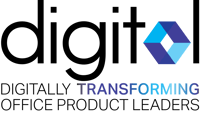The office environment has changed significantly for many workers around the world as the impact of the internet, and the connectivity it facilitates, fundamentally changes the way we work. It used to be we had to go to the office to access files, interact with co-workers, and perform our tasks. Our jobs were mostly 9-5 affairs and, when we left the office, we left our work-related responsibilities behind.
In developed economies, many lower-paid manufacturing jobs have been eliminated as factories relocated overseas in search of lower costs. Many of these jobs have been replaced with low-wage service related positions. Overall, nearly half of U.S. workers say they routinely put in more than 50 hours or more per week, often without overtime compensation.
A survey of employed email users finds:
- 22% are expected to respond to work email when they're not at work
- 50% check work email on the weekends
- 46% check work email on sick days
- 34% check work email while on vacation
As an indicator of potential trends for the rest of the world, a study from IDC in 2015 projected the number of mobile workers in the United States to exceed 100 million by 2020 and will make up nearly 75% of the total workforce! Falling prices for smartphones and tablets, improvements in mobile broadband, computer technology and user familiarity with, and acceptance of, cloud-based storage systems, all underlie this trend toward mobility.
The software we use today, whether we work for a global giant or operate as a sole proprietor, could only be dreamed about 10-15 years ago. As our access to world-class software has developed, the software business model has also fundamentally changed. Subscription services make applications affordable, widely accessible, and come with the added benefit of automatic upgrades keeping users at the forefront of technology. Of course, we're still paying for our software (perhaps more than we used to) but, the pain is spread out over many months and years.
Furthermore, wherever we may be, we have access 24/7 to our software, our files and virtually unlimited sources of information to research people, companies, and any other subject matter. The hub that used to represent our office work environment is quickly being disintermediated, a trend that has profound implications for many industries, including office products and supplies.
In 2010, according to the U.S. Small Business Administration, there were 27.9 million small businesses and 18,500 firms with 500 employees or more in the United States. Over three-quarters of small businesses were non-employers - i.e. sole proprietors. It's clear, the vast majority of U.S. workers are already disintermediated from the traditional office environment and, that the 10 million or so employees of the 18,500 largest firms are becoming increasingly so. It's likely similar trends already exist in most developed economies. Newly emerging economies may simply bypass the "office-hub" stage for many of their industries besides manufacturing.
What is all this likely to mean for office products and intelligent office solutions?
Over the last 10 years or so, the OEM's, along with the largest aftermarket manufacturers, have been chasing the segment of the market that's viable for managed print services (MPS). Let's just assume, for a moment, that MPS is only viable in firms with more than 50 printers, or those with at least 500 employees. That means the market for MPS is limited to these 18,500 firms and the other 27.9 million are off-limits.
The concept of managed print is sound, with printing costs (according to the Gartner Group) totaling between 1 and 3% of a companies annual revenue. This makes it a significant expense that should be managed yet, despite a decade of managed print offerings, it's estimated over 80% of all companies still don't know what they're spending on print.
Unfortunately, the managed print proposition just doesn't work for the overwhelming majority of businesses with less than 50 printers, while their need for managing their costs are just as important as those that do. Furthermore, those "office hubs" where the 50+ printers are networked are becoming increasingly diversified as office workers mobilize and take their printing requirements with them.
Typical office printing requirements are becoming increasingly diversified and the Managed Print Services Agreement must adapt accordingly.
How have these developments created an opportunity for independent office products resellers?
Building, selling and closing a multi-year Managed Print Services contract is a specialized "service" sale usually rewarded with a secured long-term customer. However;
- The cost of acquiring a new customer with a managed print service contract is high and is one of the key factors determining the "50-printer" threshold.
- Smaller companies do not have the time, interest, or legal resources to review "complex" multi-year services agreements.
- Independent resellers in the transactional space do not usually have the skills to sell managed print services contracts.
In short, there's almost no basis to build a tie-in between smaller companies with less than 50 printers, independent resellers used to selling transactionally, the increasing mobility of workers, and successfully selling managed print services agreements.
However, this doesn't mean the technology underlying managed print can't be successfully deployed into this environment!
The market for ink and toner is declining at 1 - 2% per year, a trend that's not likely to be reversed. The global market for ink and toner is probably $60 billion as measured in retail dollars spent. In the United States and other developed economies, the OEM's have the lion's share of the market - as much as 80%. In developing and emerging markets, the OEMs share is much smaller - sometimes as low as 20%.
If anything, the immediate outlook for market shares in the developed economies points in favor of the OEM's. If we assume for a moment the demand for ink and toner is:
- Split roughly fifty-fifty between mono and color,
- That mono is declining at 3-4% per year,
- That color is increasing perhaps 1% per year and,
- That aftermarket share is 30% on mono and less than 10% of color,
In these circumstances, it's unavoidable that aftermarket share will decline from around 20% to less than 18% over the next three years or so.
| 2016 | 2020 | Change | |
| OEM Mono | $8.75B | $7.60B | -$1.15B |
| OEM Color | $11.50B | $12.0B | +$0.5B |
| Aftermarket Mono | $3.75B | $3.25B | -$0.5B |
| Aftermarket Color | $1.00B | $1.0B | N/C |
| Total | $25.0B | $23.85 | -$1.15B |
Only technology can save the independent office products and supplies resellers from steep declines in revenue and market share. The good news is, all the required technology exists and that it's accessible and affordable. The bad news is, technology and the typical reseller do not usually go hand-in-hand. Accessibility is one thing but, awareness, understanding, acceptance, and deployment are fundamentally different challenges.
Technology and the Independent Reseller
- Monitored (not managed) print
- Logistics
- Catalog and pricing management (B2B e-commerce)
- CRM
- Digital Marketing
Independent aftermarket resellers do not currently compete effectively in the "Blue Ocean" market segment dominated by big-box resellers and OEM's, and through which over $20 billion of high-priced OEM and Tier-1 aftermarket cartridges are currently sold. Unless they improve their value proposition this market is, and will remain, off limits and there will be no office products growth opportunity.
Effective use of technology and connectivity has the power to elevate the performance capabilities of smaller businesses and qualify them to do business with prospective customers in the "Blue Ocean". In so doing, the office supplies market becomes a $20 billion growth opportunity in the United States, and probably double this amount globally.
The OEM's should be far more concerned about the 1-2% annual decline in the print market than the aftermarket resellers. For them, this decline means squeezed margins, fewer funds for research and development, longer product life cycles, etc. However, for the aftermarket, these conditions should spell opportunity.
- The market is mature - aftermarket alternatives more accepted.
- Even "Blue Ocean" customers ultimately don't care if the cartridge is OEM or aftermarket - OEM and aftermarket MPS programs have fundamentally proven this!
Just imagine for a moment -
- 20 million small business printing devices connected to the internet via smaller independent resellers business intelligence tools/apps (software).
- 5,000 resellers connected to all the major manufacturers and distributors, their pricing, their catalog, and their product collateral. Connected to their distribution centers, their inventory, where it is, and the quantity available!
- 5,000 resellers blogging, emailing, active on social media, all with a purpose to alter the carefully crafted perception, established from years of relentless negative OEM marketing campaigns, that only original brand ink and toner cartridges provide acceptable print quality.
Then we'd be talking of an improved value proposition, getting out ahead of the curve, anticipating customer demand, utilizing business intelligence for preparing the best product option, improving customer acquisition rates, and reducing churn. Then we'd be looking at a fundamentally different outlook for the aftermarket office supplies resellers and we'd be looking at potential consumer savings of billions of dollars when compared to the currently overwhelming preference for high-priced, original brand ink and toner cartridges.
Conclusions:
The market decline for office products is not going to be reversed and it's inevitable the OEM's global sales dollars are going to decline as the market declines. Even picking off some of the existing aftermarket share is not going to offset their overall reduction in sales. On the face of it the future for office supplies dealerships looks bleak.
However, it should not be inevitable that the aftermarket resellers sales also decline. In fact, it should be the exact opposite. If resellers embrace technology they will transform this industry, they will do very well as they do so, and the OEM's and the big-box resellers may still turn out to be the biggest losers.
A business transformation path should be emerging from the material we publish - for a free e-Book on the business development opportunities in the Office Products industry please click the link below.









